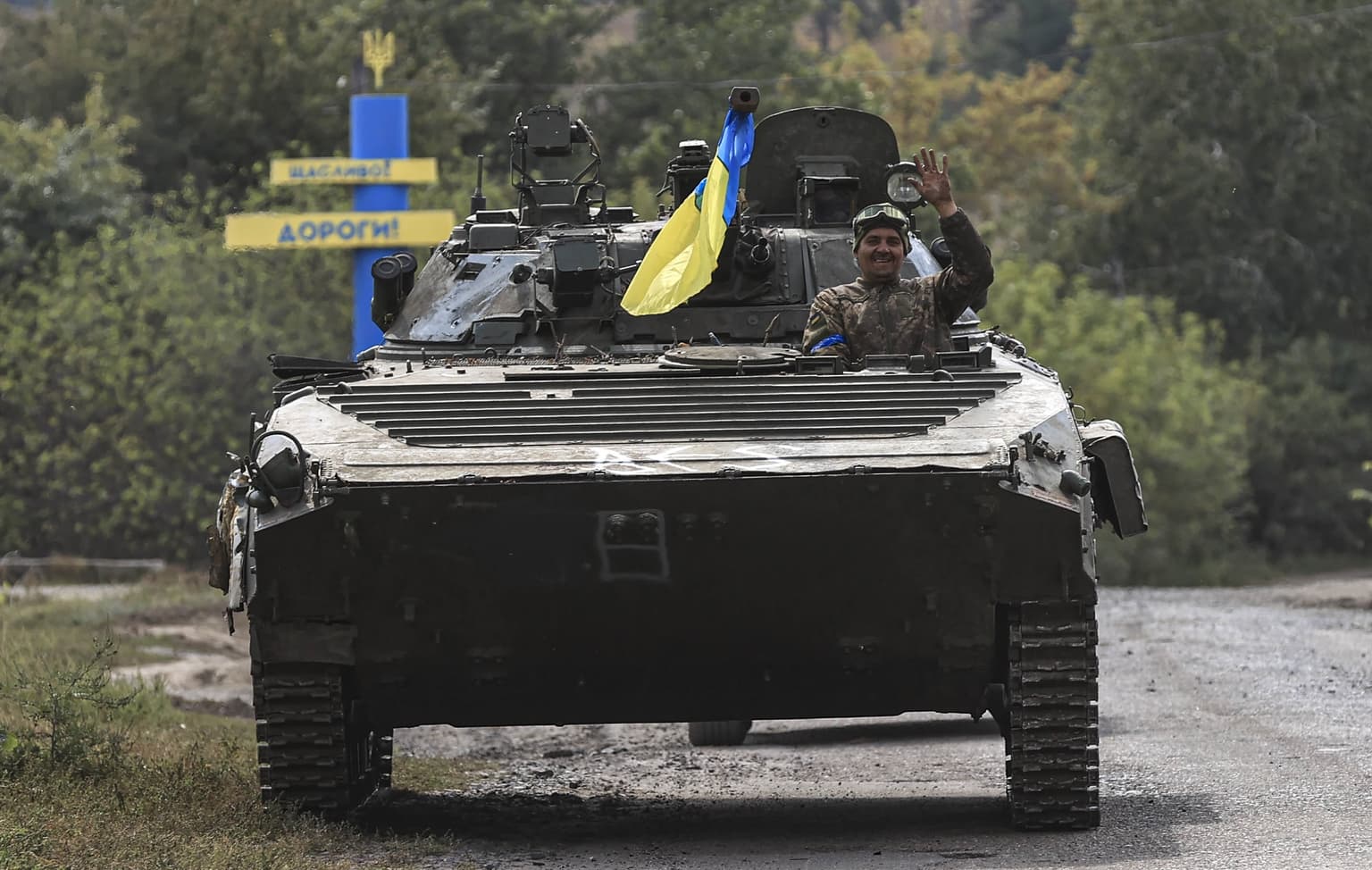Kupiansk, Izium liberated as Russian defenses collapse amid rapid Ukrainian advance in Kharkiv Oblast

Four days into Ukraine’s surprise counteroffensive in Kharkiv Oblast, Russian forces have retreated from the key cities of Kupiansk and Izium, signaling a near-total collapse of the Russian line of defense in the area.
Reports are also circulating on social media and Telegram channels indicating that Russian troops have left other key settlements deeper inside Kharkiv, Donetsk, and Luhansk oblasts but they haven’t been officially confirmed.
The liberation of these areas, some located over 60 kilometers behind where the frontline stood a week ago, represents the most significant Ukrainian achievement in the full-scale war since Russian troops withdrew from northern Ukraine in early April.
On the morning of Sept. 10, photos circulated of Ukrainian troops in front of Kupiansk, a strategic city on the Oskol River, 60 kilometers east of Balakliia, which was confirmed liberated on Sept. 8.
The photo was shared by Natalia Popova, advisor to the head of Kharkiv Oblast Council.
Further confirmation came soon from the Security Service of Ukraine (SBU), which posted a photo of Ukrainian special forces in the city, saying “Kupiansk is and will always be Ukraine.”
Early reports about Ukrainian forces entering Izium were confirmed later in the afternoon by Russian sources.
Daniil Bezsonov, proxy official in the Russian-occupied parts of Donetsk Oblast, wrote on his personal Telegram channel that "yes, we left Izium, along with a few other settlements in the Kharkiv area."
The news has since been picked up by some Russian media outlets, including Gazeta.ru and RBK.
Later on, Ukrainian troops also confirmed entering Izium. Ukraine's 25th Airborne Brigade published a video of its soldiers at the entrance to the city.
Collapsing defenses
It remains to be seen how long this momentum will last, but early signs indicate that Ukraine’s lightning advance in Kharkiv Oblast has brought about a mass rout of defending Russian troops.
The fact that the retreat from Izium was announced by Russian sources before any word of its capture suggests that the city may have been liberated without much resistance.
When the counteroffensive in Kharkiv Oblast initially began on Sept. 7, Russian sources claimed that the area was defended by less-experienced troops, but that reinforcements were on the way. Russian state media showed footage of columns of reinforcements supposedly heading to the area.
It is unclear whether these reinforcements did not make it in time, or if they were also routed in battle.
Regardless, the speed of the Ukrainian advance has broken through all of Russia’s lines of defense in the area, breaking the occupiers’ capacity to resist along the entire frontline in Kharkiv Oblast.In the meantime, Russian Telegram channels have reported retreats from many other strategic cities and towns, some much deeper behind Russian lines.
Grey Zone, a channel connected to the infamous Russian mercenary Wagner Group reported that Russian troops had withdrawn from Lyman in Donetsk Oblast without a fight.
Other towns mentioned in similar unconfirmed reports include Oskil, Svatove, and Kreminna.
Russia’s reaction
For hours after the loss of Kupiansk and Izium became apparent, the Russian government, military, and state media were silent.
As Ukraine continued to advance rapidly, Russian dictator Vladimir Putin posed for photos at newly-built sports and recreation facilities in Moscow to celebrate the Russian capital’s birthday.
In their daily briefing, the Russian Defense Ministry made no mention of the Ukrainian counteroffensive, only reporting on allegedly destroyed Ukrainian targets along the length of the frontline.
Only later was the message updated, with the ministry announcing that “a decision was made to “regroup Russian troops stationed in Balakliia and Izium" and transfer those troops to Donetsk Oblast.
The Russian Defense Ministry also claimed that a number of “feints and demonstrative operations” were conducted to support this “regrouping,” and that 2,000 Ukrainian troops had been killed in the area in the past three days. No mention was made of the loss of any territory.
Ukraine hasn’t yet commented on Russia’s claim about losses.
Strategic significance
With Russia relying heavily on rail infrastructure for the transport of troops, equipment, and supplies, the capture of Kupiansk has significant ramifications for the Russian war effort further east.
Ukraine’s capture of the city, a major railway hub, cuts off Russian rail access not only to Izium, but to large portions of the frontline in the Donbas, as far south as Sievierodonetsk.
Most reports remain unconfirmed, but there are many hints that the collapse of Russian defenses in the area is quickly spreading beyond Kharkiv Oblast to the Donbas, the region in Ukraine’s east that has seen the heaviest fighting of the war.
Late in the afternoon on Sept. 10, Luhansk Oblast Governor Serhiy Haidai announced that residents of Lysychansk, a city located about 100 kilometers east of Izium, had seen Ukrainian troops on the outskirts of the city.
Lysychansk, a city in Luhansk Oblast with a pre-war population of 95,000, was occupied by Russian troops in early July.
___________________________________
Note from the author:
Hi, I'm Francis Farrell, the author of this update on Ukraine’s counteroffensive.
It looks like today will be remembered as a truly historic moment in the history of this war. Ukraine still has a lot of work to do to liberate the rest of its occupied territory, and the Kyiv Independent will be there all the way. Please consider supporting us on this historic journey.











